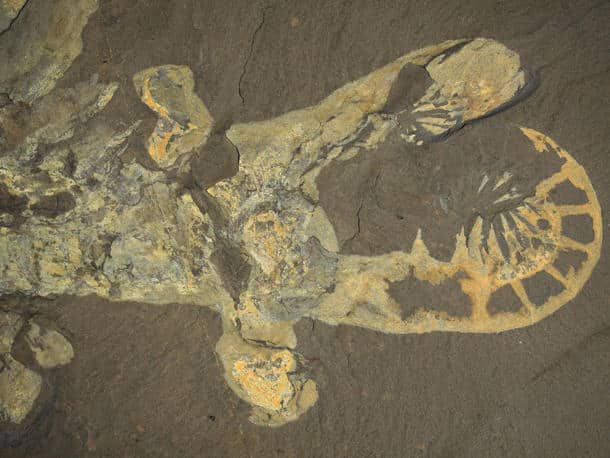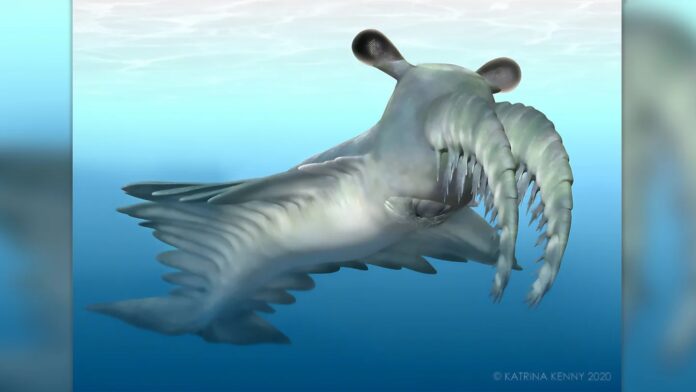One of the largest Cambrian creatures was the stem-group euarthropod Anomalocaris canadensis, which is frequently regarded as the archetypal apex predator of the period. This radiant is frequently considered a demersal hunter who caused the wounds seen in benthic trilobites. The ability of A. canadensis to masticate or perhaps manipulate biomineralized prey using its spinose frontal appendages is controversial.
By applying a new integrative computational approach, scientists rigorously analyzed an A. canadensis feeding appendage and tested its morphofunctional limits. Anomalocaris canadensis was a 2-foot (60-centimeter) long sea mammal. Biomechanical investigations on its arachnid-like front “legs” indicate that it was probably much weaker than previously thought. One of the largest creatures to have existed during the Cambrian period, it was likely swift and nimble, darting after soft prey in open water rather than going after species with hard shells on the ocean floor.
Anomalocaris canadensis, which translates to “weird shrimp from Canada” in Latin, was first detected in the late 1800s, and it has long been believed to be the cause of some of the damaged and crushed trilobite exoskeletons discovered by paleontologists in the fossil record.

Lead author Russell Bicknell, a postdoctoral researcher in the American Museum of Natural History’s Division of Paleontology, said, “That didn’t sit right with me because trilobites have a powerful exoskeleton, which they essentially make out of rock, while this animal would have mostly been soft and squishy.”
Recent studies on A. canadensis’ armor-plated, ring-shaped mouthparts raise questions about the animal’s capacity to break down tough foods. The most recent research sought to determine whether the predator’s long, spiny front appendages could perform the function in their place.
The first task for the research team, which was made up of experts from Canada’s 508-million-year-old Burgess Shale, Germany, China, Switzerland, the United Kingdom, and Australia, was to create a 3D reconstruction of A. canadensis from its remarkably well-preserved but flattened fossils. The team demonstrated that the predator’s segmented limbs could grab prey and stretch out and flex using analogs such as contemporary whip scorpions and whip spiders.
The stress and strain points on A. canadensis’s gripping behavior were shown using a modeling approach called finite element analysis, which demonstrated how its appendages would have been harmed while seizing tough prey like trilobites. To forecast the body position the predator would most likely adopt when swimming, the researchers employed computational fluid dynamics to submerge the 3D model of the predator in a fictitious current.
These biomechanical modeling tools, which were used for the first time in a scientific study, paint a different picture of A. canadensis than was previously believed. The creature was probably a swift swimmer, hunting soft food in the water column with its front limbs extended.
Bicknell Said, “Previous conceptions were that these animals would have seen the Burgess Shale fauna as a smorgasbord, going after anything they wanted to, but we’re finding that the dynamics of the Cambrian food webs were likely much more complex than we once thought.”
Journal Reference:
- Russell D. C. Bicknell, Michel Schmidt, Imran Rahman, et al. Raptorial appendages of the Cambrian apex predator Anomalocaris canadensis are built for soft prey and speed. Proceedings of the Royal Society B. DOI: 10.1098/rspb.2023.0638
